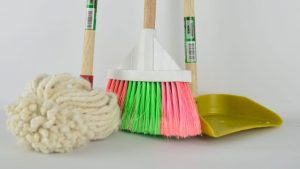This post was last updated on August 12, 2021 by Preethi Sukumaran
I’m not sure if my fascination with fabric is more or less than my fascination for washing fabric. But I have always loved Indian fabric and traditional textile crafts.
In school, I learned about the spice trade of India and how it helped many regions within India grow rich as they traded flavourful and hard to find nutmeg, pepper and cardamom which then found their way to kitchens across the world. Romila Thapar’s book on Early India, details this fascinating trade. Muziri located near Kodanganallur Village near Kochi was linked to the pepper, spices and beryl trade. A second century Ad Greek papyrus documents a contract between an Alexandrian merchant importer and a cargo financier of pepper and spices from Muziri, giving us an idea of the large volume of this trade.

Excavations at Arikamedu tell us about a large settlement that used to be in trade contact with ships and merchants from the eastern Mediterranean. Apart from shipping locally available goods, Arikamedu has also been a place where certain kinds of textiles were manufactured locally to roman specifications and then shipped there.

The Roman historian Pliny complained that trade with the East caused a serious drain on Roman income of which atleast 110 million sesterces went to India’s luxury goods. Roman records indicate that the Roman Senate actually banned the import of Indian Muslin for some time to stop the roman gold drain.
Apart from Rome, Indian textiles found their way to Egypt – scraps of Indigo dyed cotton Ikat textiles were found in a Pharaoh’s tomb. Excavations at Mohenjo-Daro unearthed scraps of Rose madder cloth along with spindles.Herodotus, the ancient greek historian, described India’s cotton as “a wool exceeding in beauty and goodness that of sheep”
Nothing symbolises the freedom and Swadeshi movement as much as the charkha does, and as does Khadi, the quintessentially Indian fabric.Khadi is not just a piece of fabric – it represents an ideology and the beginning of a movement that was founded on self reliance. This said that India could spin her own fabric and clothe herself, thus helping her own economy grow forward.

Khadi was promoted by Mahatma Gandhi as a fabric that would help promote rural self employment and self reliance, and made it an integral part of the freedom movement. But the Swadeshi movement then did not come cheap. Khadi was much more expensive compared to British made fabric. So when people started to complain to Gandhi about the cost of Khadi, he stopped wearing an upper garment and started wearing only a Khadi dhoti as a subtle, or perhaps not so subtle message: that it was better to wear as much or as little Khadi as possible instead of clothing yourself with something that was not made in India by an Indian.
Our choices today are multifold. We are a much more global economy, and we have free movement of products, and fabrics from different parts of the world into our country. Globalisation comes with its own unique sets of opportunities. And perhaps we have come back full circle to our days of yore, when enterprising merchants and financiers helped ensure the spread of Indian textiles.
With one key difference. The merchants of Arikamedu in ancient times, continued to grow, spin and wear their own cloth, and continued to hold onto their cultural and craft traditions. In fact they grew better and better at it until they had so much to offer, that they could not just make products for themselves but for everyone else as well. The textile crafts and traditions of India are fast disappearing today. They have morphed fast, have taken on several unwholesome aspects and are no longer bountiful or available in plenty.

There are many reasons for this. And many hidden reasons when you start examining this. There are also several unhealthy consequences to this.
In this month when we celebrate the 67th year of our Independence, won by an extremely unique civil disobedience and non violent movement, we will focus on the equally unique Fabrics of India. This month, on the Krya blog, We will examine in great depth the history of Indian textiles while focussing on certain textile crafts. We will examine their environmental sustainability, explore how well they work for us in our tropical weather & speak to practitioners of the craft and designers who work with traditional fabrics.

We will also explore Khadi in depth and study in detail the current issues we grapple with in textiles namely the spread of Bt cotton, the cotton farmer suicides, the environmental issues presented by the textile dyeing industry and the nascent but growing organic cotton industry. All along we will interview and present to you the works of young entrepreneurs and designers who have firmly waded into the fabric tradition of India and are working hard to provide us access again to our famed textile past rooted in the principle of being indigenous, local and environmentally sustainable.
Our previous series on reusable menstrual products was an eye opener to us and provided us with a lot of perspective and inspiration. We have no doubt this series on the fabrics of India will be even better. We look forward to bringing you lots of depth, fresh perspective and inspiring reasons to choose a more sustainable and earth friendly wardrobe. Keep reading this blog.




